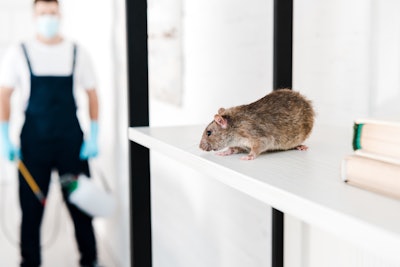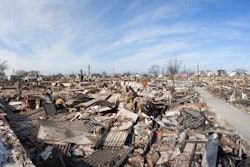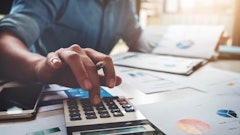
Supply chains and food warehouses are properties where insects look to for shelter during the winter months. With the dropping temperatures causing an influx in pest infestation, it’s important to know how to help protect your property during the season. Without proper pest management a lot of damage and destruction can occur. Here are some of the most common culprits to wreak havoc on your facilities during winter.
- Rodents: The colder months can cause even more of an issue as rodents search for warmth and food inside processing plants and supply chains. These pests are known to carry various diseases such as hantavirus, leptospirosis, and Salmonella. They can also cause damage by gnawing on structures and electrical wires.
- Cockroaches: These resilient pests spend most of their time hiding out in dark places and coming out mainly to seek food. The nocturnal creatures primarily enter facilities with incoming supplies and are such good hiders that they often go unseen. Just because you are unable to see them doesn’t mean they’re not inside the facility. Cockroaches are attracted to warm and damp place. Which means your facility may be their perfect winter sanctuary.
- Stored Product Pests: These pests are known to catch a ride into facilities after finding their way into grain and seed products throughout the supply chain. They can cause damage to your products and make recalls inevitable. Some of the most popular stored product pests are the indianmeal moth, saw-toothed grain beetle, rice weevil and warehouse beetle.
- Ants: There are many different species of ants and they all have one thing in common: they can be relentless villains within the supply chain. These nuisance pests primarily enter facilities through tiny cracks and are attracted to food odors, sweet and sticky substances and grime that can accumulate in drains. They can affect supply chain by contaminating product.
- Flies: These insects are among the filthiest of all pests and breed rapidly indoors during winter months with larvae developing into adult flies within 7 to 10 days. They carry billions of germs outside their bodies and they can contaminate food and spread disease. Each time a fly lands, it can leave behind harmful pathogenic microorganisms and bacteria. Flies are a potential triple threat through irritating staff, transmitting disease and contaminating products.
Now that we are aware of the culprits, let’s look at some tips on how to help prevent them from taking over your supply chain.
- Seal off entry points: You likely already know ants and cockroaches can enter facilities through small cracks, but did you know rats can squeeze through holes as small as a quarter? Mice need an even smaller opening. Closing off all cracks and crevices with weather-resistant materials and sealing all holes can make an important impact on keeping pests out of your building.
- Follow a sanitation regimen: Since many pests are attracted to the grease and grimy buildup that can be found in many supply chains, consider implementing a routine sanitation plan that incorporates an organic cleaner, especially underneath, behind and on top of equipment and machinery.
- Check equipment for proper placement and maintenance issues: There are many hard-to-reach areas within facilities which make them hard to clean, allowing trapped food and microorganism growth. Ensure that all equipment is easily accessible from all sides. Also check to make sure all machinery functions properly. It is important that liquids and products do not collect inside machinery, as pests may be attracted to them.
- Conduct staff training: Ask your pest management professional to provide Integrated Pest Management (IPM) staff training to your team. By ensuring everyone is educated on pest hot spots and signs of pest activity, you’ll be able identify issues quicker and help prevent infestations before they begin.
Armed with these tips, you and your team are better equipped to help prevent pest problems. It is also crucial to partner with a licensed pest management professional who can create a winter IPM program designed specifically for your facility during colder months. Being proactive is an important final step in protecting your reputation and your business’s bottom line for any season.




















